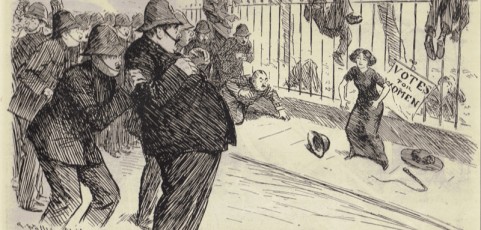The annual Performance Review is a critical influence situation, perhaps the most important of the year, and one that requires planning and influence flexibility. The review season can be a nervous time for employees, and the best way to combat nerves is through preparation. Even if you’re not particularly apprehensive, even if you’re confident that the review will run smoothly, time allocated to preparation can help you deal with any unexpected hitches, and maximise what you get out of the process. The goal of an appraisal is to give feedback – to communicate the expectations the organisation has for the employee. But it’s a two way street, a dialogue, and your chance to let your employers know what you want. Many performance appraisals are about progress – employees asking about promotions, receiving feedback and ensuring they are set a challenging and inspiring set of targets for the year ahead. Your ultimate goal for the review might be: Pushing for a new set of challenges. Asking for investment in your personal development. Suggesting new ways to manage your work/life boundaries. Putting yourself forward for new projects, overseas secondments, etc. On the Positive Power & Influence Programme, delegates learn how to influence upwards – to influence others through personal power when they don’t hold positional power. And influencing the opinion of your supervisor, manager or team leader, will take preparation. This means planning both content and approach – what you say and how you say it. In short: when making the case for yourself, perhaps the most critical issue is to determine what is really important to the person with whom you are meeting. Whatever the situation, be explicit, specific, concise and confident about the value you bring to the organisation. Don’t waffle! BEFORE List your achievements Make a list of all the achievements and accomplishments you have made since the last review. If you don’t have a system for keeping track of them, this will take time and thought. Most importantly, make note of how your employer has benefited from your hard work, i.e. increased profits, improved systems, completed projects, internal/external relationships, etc. Then highlight everything you want to discuss. Review this material the night before your meeting. List your goals Make a list of what you want to get out of the meeting. Performance appraisals are all about your progress. Think about the subjects you want to raise, such as promotions, targets for the year ahead, and projects you want to take on. Are there opportunities for personal development? Do you have ideas about how you can better manage your work/life boundaries? Be aware of the recency effect You may find that your manager is focussing on more recent events as...
When Experts Become Leaders
Many people are hired on the strength of technical expertise, only to find themselves promoted to a position of leadership. This is a time in your career when putting active thought into the way you influence others can have real value. Shifting to a leadership role can cause all kinds of problems for the expert. The expertise that once formed the core of your duties may be wholly or partially sidelined by tasks such as determining/tracking budgets, running meetings, setting goals, performance reviews, managing relationships, and more. The transition may be unsettling. Much of your confidence may stem from your own expertise. You may be used to being judged on your knowledge. It can be challenging to move beyond a specialism, to step outside your field, to a place where your performance will be judged by a new set of criteria. Not only that, but the technical knowledge you once held can wane as you spend more time away from the coal face. Another issue is whether the expertise you hold is actually close to the core of the organisation. If your expertise is in finance, and that’s also the company’s core function, you are more naturally aligned with the organisation’s overall direction. Whereas an IT or systems expert, taking on leadership responsibility in the financial sector, isn’t such a comfortable fit. There are of course significant advantages to leading a team when you have the knowledge to back it up. Professional management, without technical expertise, may have to fight to win credibility or the respect of those working under them. Whereas an expert leader is more likely to start with the respect of co-workers, and also to function as a role model – showing a career path to others. Nevertheless, someone who is technically good at their job won’t always be a natural leader, at least to begin with. Jonny Gifford, co-author of The Expert as Leader, conducted research in seven UK organisations with a strongly scientific/technical base to their core functions, surveying the experiences of technical experts who had taken on management responsibilities, and canvassing colleagues who worked with them. One of the conclusions of his report was that any expert-leader should learn to be self-aware. He said: “Self awareness is at the core of leadership, the core of working with other people. Only by being aware of your own self can you realise how you’re going to influence and impact on other people.” It may be that a recently promoted leader, will need to work on their influence style flexibility. They may be used to interacting in a certain way. As an expert, they may have a strong reliance on facts/analytics when making decisions, and yet the...
The Influence Sketchbook
It’s back to school time. It’s the end of holidays. The nights are closing in. To combat Autumnal blues, and following on from our Influence at the Movies post, the Positive Power & Influence team has chosen five favourite sketches that demonstrate influence behaviours and styles in action, with mixed results. MONTY PYTHON: Argument Clinic Style: Persuading Behaviour: Reasoning Notes: Michael Palin reasons for all he’s worth. John Cleese proves to be an immovable object. Excerpt: “An argument is a collective series of statements to establish a definite proposition.” PETE & DUD: One Leg Too Few Style: Bridging Behaviour: Involving/Listening Notes: Peter Cook involves, discloses; Dudley Moore listens. Excerpt: “Need I say, with over much emphasis, that it is in the leg division that you are deficient.” BIG TRAIN: Zurich Sketch Style: Persuading/Attracting Behaviour: Proposing/Sharing Visions Notes: Simon Pegg takes a bold step to roadblock impending disaster. Excerpt: “Alexander’s going to be hugely distracted and confused and he’s maybe not going to even talk about Zurich at all.” MONTY PYTHON: Holy Grail Style: Asserting Behaviour: Stating Expectations Notes: Graham Chapmen attempts to assert his Kingly position . . . but to no avail. Excerpt: “Are you suggesting coconuts migrate?” MITCHELL & WEBB: 3rd Person Caesar Style: Asserting/Attracting Behaviour: Positive Evaluation/Sharing Visions Notes: David Mitchell tries a range of styles to coax his boss through the new protocol. Excerpt: “So instead of saying ‘I am listening’ you say ‘Caesar is listening’ or ‘Caesar listens’. Makes you seem more . ....
I have a dream . . . The Influence Style of Attracting
When Martin Luther King stood at the podium on the steps of the Lincoln Memorial in Washington DC half a century ago, he did not inspire a generation by declaring ‘I have a great strategic plan.’ He said, quite simply, ‘I have a dream.’ And like many of the great speeches, he was sharing a vision. He was seeking to attract his listeners to a dream of a united America, where all men and women were regarded equal, regardless of colour. Great orators seek to draw the listener towards their way of thinking. They emphasise common ground by constant use of the words ‘us’ and ‘we’ – ‘we all believe’, ‘together we can’. But it’s not all sharing visions. Our selection of speeches show a complex weave of human behaviours and qualities. Leaders and speakers attract, propose, reason and persuade, offer incentives and pressures, disclose and assert. John F. Kennedy’s Inaugural Address from January 1961, for example, climaxes with the direct request that Americans . . . ‘Ask not what your country can do for you – ask what you can do for your country.’ It includes a call for enemy powers to find common ground . . . ‘Let both sides explore what problems unite us instead of belabouring those problems which divide us.’ There are admissions and disclosures . . . ‘All this will not be finished in the first 100 days . . . I cannot see how the future will pan out . . .’ But the overriding purpose is to attract, through words, rhetorical devices such as three-part lists and contrasting pairs, through tone of voice and through body language. And to celebrate the 50th anniversary of Martin Luther King’s dream, the Positive Power & Influence team has picked ten examples that illustrate the power and influence of attraction. Winston Churchill, ‘This was their finest hour’, 1940 Notes: The ‘finest hour’ speech, of which this is a later recording, was delivered by Winston Churchill to the House of Commons in June 1940. In May he had delivered the ‘Blood, toil, tears and sweat’ speech, his first to Parliament as Prime Minister. In early June he made the ‘We shall fight on the beaches’ speech, after reporting the evacuation from Dunkirk. Now he spoke to Parliament as France sought an armistice with Germany, and Britain faced the prospect of continuing alone. Excerpt: “The whole fury and might of the enemy must very soon be turned on us. Hitler knows that he will have to break us in this island or lose the war. If we can stand up to him, all Europe may be freed and the life of the world may move forward into...
Like a Phoenix from the Ashes
‘I gave him his head . . .’ A tale of strong but sympathetic leadership in a crisis You have a star performer. He has a wide skillset, shows dogged perseverance, great accuracy and determination. Not only that, he’s a galvanising member of the team – he’s relaxed, charming, with a boyish sense of humour, and yet has the steely resolve of a born competitor, inspiring – and drawing inspiration from – those around him. His performances attract more and more attention. This leads to a rapid promotion – too rapid. As team leader, his performances dip, his goals are no longer achieved, his confidence nosedives, and he’s suddenly, seemingly, yesterday’s man. He steps down. He finds himself back in the same old surroundings – just another member of a team. Not only that, but a team in crisis. Luckily, his nickname is Beefy and his new team leader is Mike Brearley. It’s tea on the fourth day of the third test. England’s cricketers are already one-nil down in the 1981 Ashes Test series against Australia. The scoreboard at Headingley displays the latest odds from Ladbrokes. 1-4 – Australian win 5-2 – Draw 500-1 – England win Australia made 401 runs in the first innings. Having dismissed England for 174, they enforced the follow-on, making England bat again. Writing in The Cricketer, Christopher Martin-Jenkins said: “Ian Botham, magically transformed in his first match away from a captaincy which had weighed more heavily than Frodo’s ring, stole the Third Test from Australia in two hours of thunderous driving. Coming in at 105 for 5, with England still 122 behind, his brilliance, bravado and, in [Australian captain] Kim Hughes’s words, his ‘brute strength’, gave England’s bowlers 129 runs to play with. At 56 for one their cause seemed hopeless but Bob Willis took eight of the last nine wickets, Mike Gatting and Graham Dilley held crucial catches and the daylight robbery was completed amidst national rejoicing. “Only once before had a Test been won by a side following on [in 1894] . . . But the speed with which the match at Headingley was turned upside down made it unique; something one expects to witness only once in a lifetime.” How was it done? A huge number of factors, including blind luck, played into that most decisive rediscovery of form. What would become England’s most famous cricketing victory, wasn’t just down to Botham. His astounding innings opened the door, but it was Bob Willis’ decisive bowling spell that snuffed out the Australian run chase. Part of the credit for Botham’s turnaround must go to the influence of his Captain Mike Brearley. Brearley’s leadership loosened the shackles. So what was his leadership...
The Influence of Suffragettes
One hundred years after the death of Emily Davison at the 1913 Derby, we look at the way leading suffragettes sought to galvanise support for their cause. “We were called militant, and we were quite willing to accept the name. We were determined to press this question of the enfranchisement of women to the point where we were no longer to be ignored by the politicians.” Emmeline Pankhurst, 1913. We recently ran an article examining the influence styles and techniques used in 10 famous speeches, showing how speakers attract an audience to their way of thinking by emphasising common ground, by sharing visions of a united future, by proposing, reasoning and persuading, and by maximising their impact through rhetorical devices such as three-part lists and contrasting pairs. Now, following the centenary of the most shocking occurrence in the history of the suffragette movement – the death of activist Emily Davison after she stepped in front of King George V’s horse at the Epsom Derby in 1913 – we look at the speeches, writings and street corner oratory from leading suffragettes and women’s rights campaigners in Britain and America. The late Victorian roots of the campaign for universal suffrage in Britain saw the growth of non-militant groups known as suffragists, who held meetings and sent petitions to Parliament. In 1897 they amalgamated into the National Union of Women’s Suffrage Societies, led by Millicent Fawcett, before Emmeline Pankhurst started the Women’s Social and Political Union with the motto ‘Deeds not words’ in 1903. Historians still debate whether the militant tactics ultimately helped or hindered the cause, but the influence of their words can still be felt a century later. Emmeline Pankhurst, ‘Freedom or death’ speech, 1913 Emmeline Pankhurst was an activist and leader of the British suffragette movement. Born and raised in Moss Side, Manchester, she was introduced to the concepts of the movement from a very early age by her politically active parents. The excerpts below come from a speech she delivered in Hartford, Connecticut, in November 1913. “I am not only here as a soldier temporarily absent from the field of battle. I am here—and that, I think, is the strangest part of my coming—I am here as a person who, according to the law courts of my country, it has been decided, is of no value to the community at all. And I am adjudged because of my life to be a dangerous person, under sentence of penal servitude in a convict prison. So you see, there is some special interest in hearing so unusual a person address you. I dare say, in the minds of many of you—you will perhaps forgive me this personal touch—that I do...








